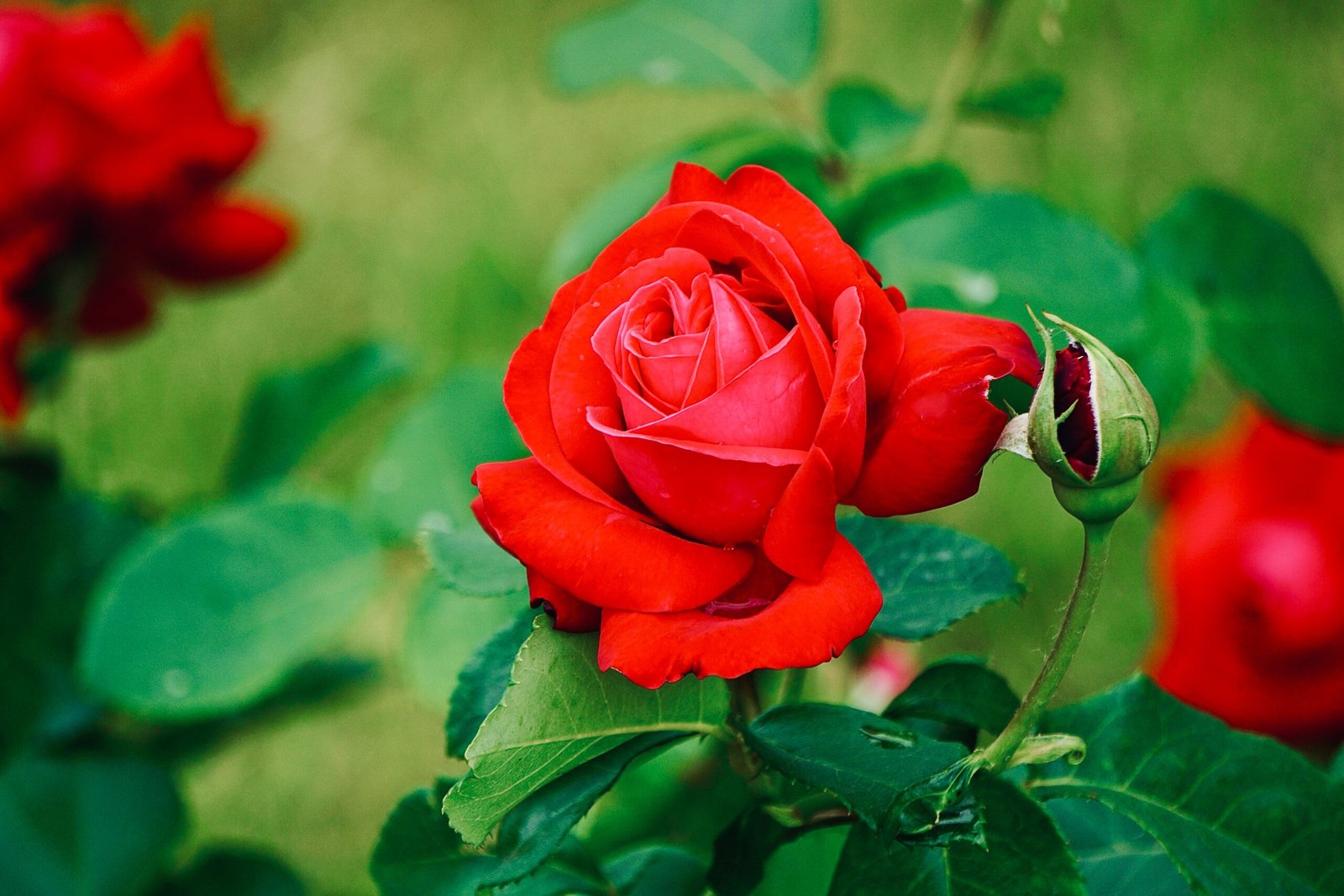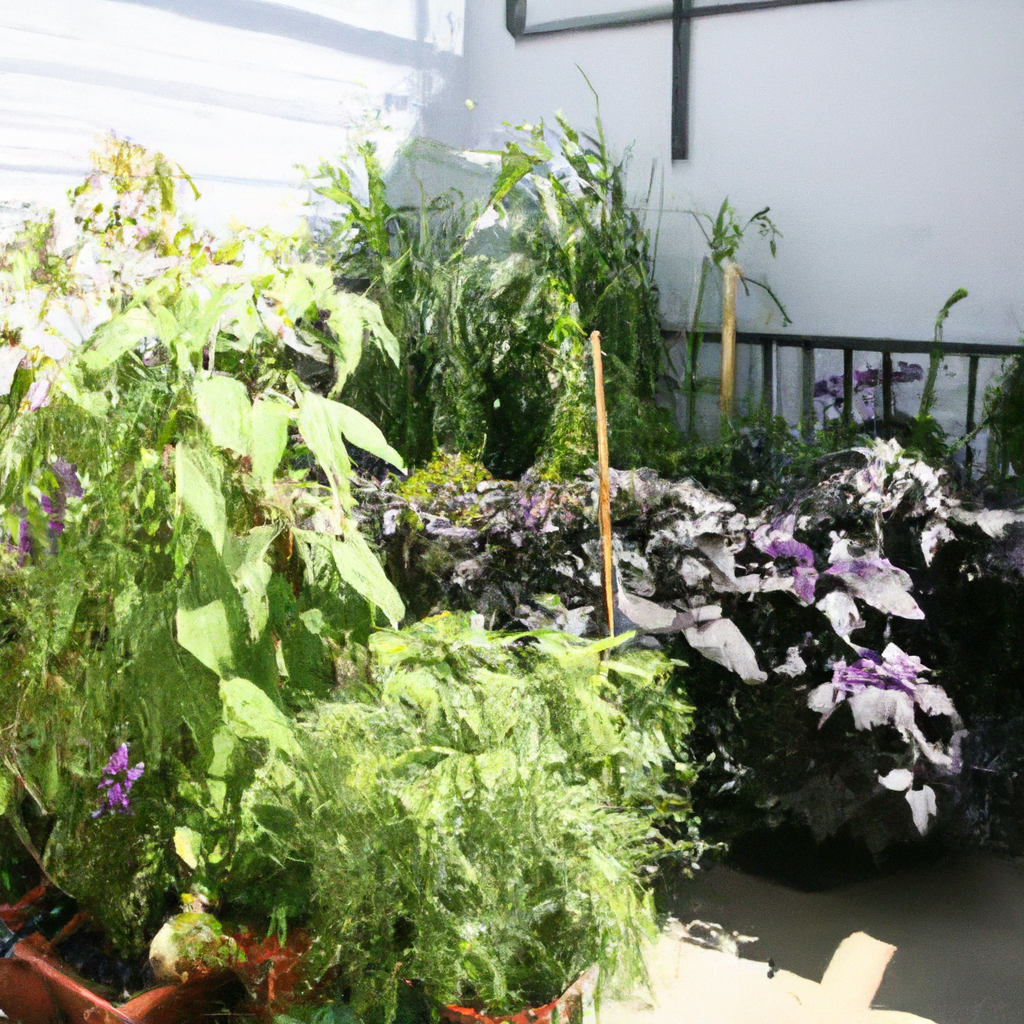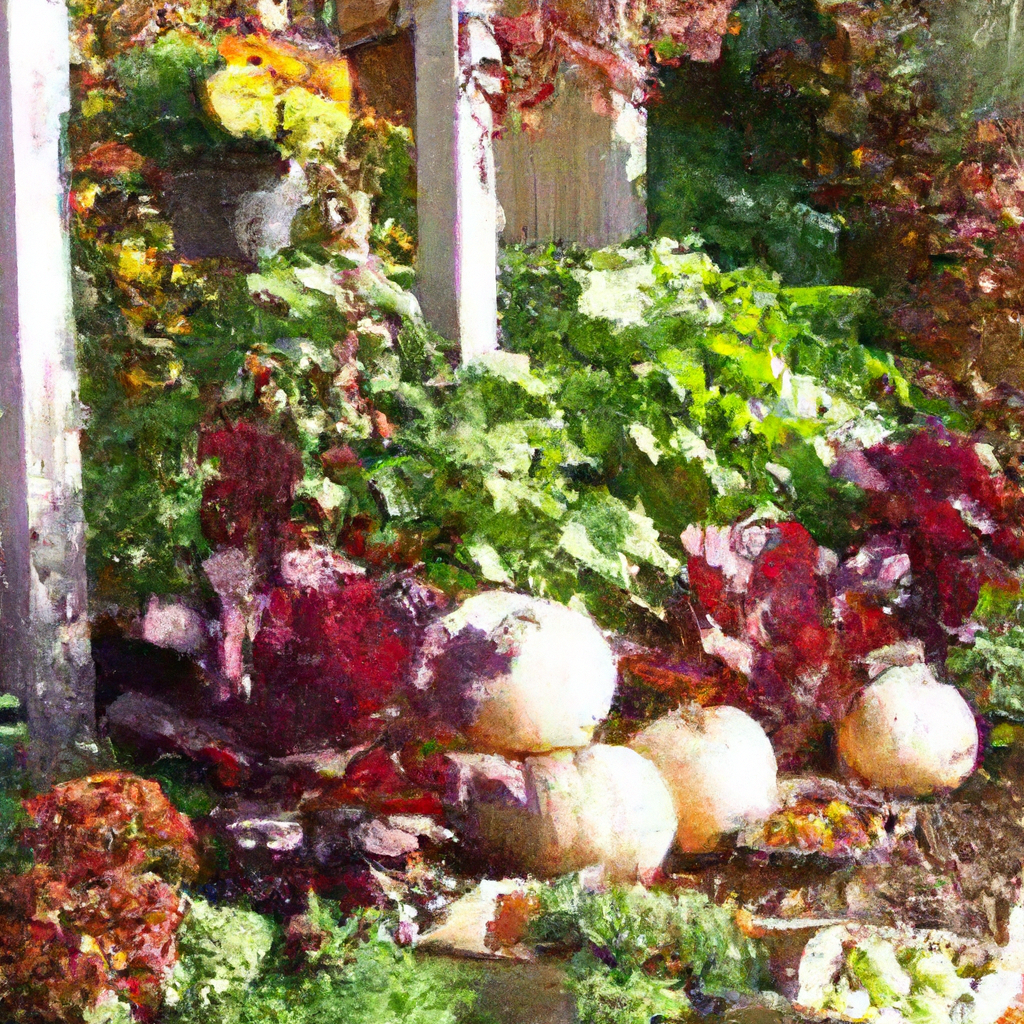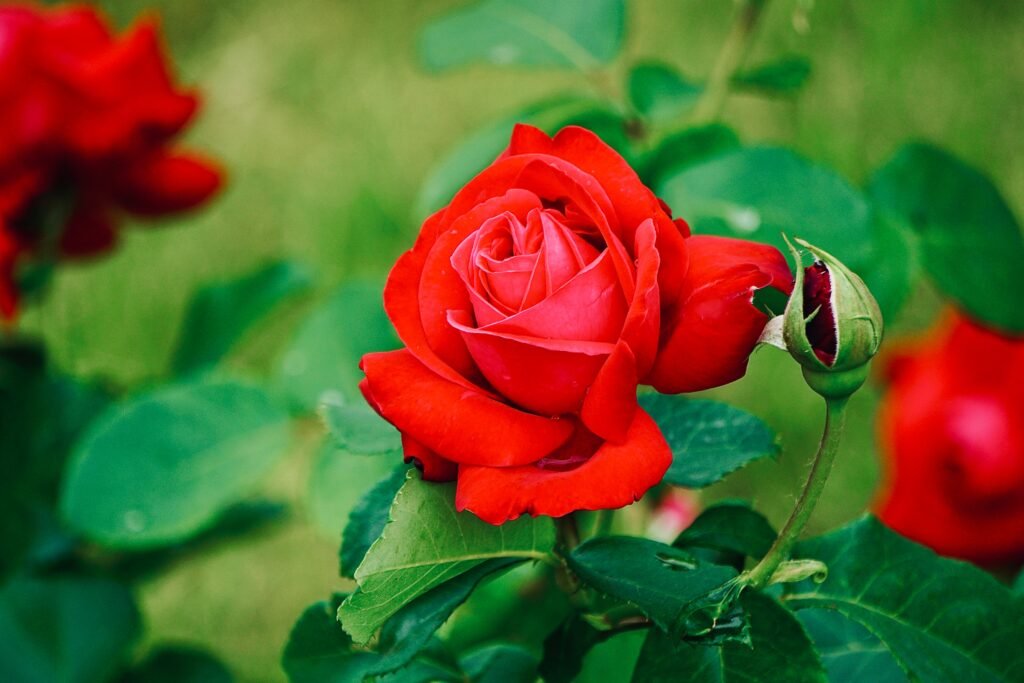
Maintaining a beautiful container garden doesn’t have to be a daunting task. In fact, with these 10 simple tips, you’ll be able to keep your plants healthy and thriving all year round. From proper watering techniques to pest control strategies, this article will provide you with the essential knowledge needed to ensure your container garden stays vibrant and flourishing. So, grab your gardening gloves and get ready to transform your outdoor space into a green oasis!

Choosing the Right Containers
Consider the size and material
When choosing containers for your container garden, it is important to consider the size and material. The size of the container should be appropriate for the plants you plan to grow. Larger plants will require larger containers to provide enough space for their roots to grow. Additionally, the material of the container can affect the temperature and moisture levels of the soil. Clay and terracotta containers are porous and can dry out quickly, while plastic containers retain moisture better. Consider the specific needs of your plants and choose containers accordingly.
Ensure proper drainage
Proper drainage is essential for the health of your container plants. Without adequate drainage, excess water can accumulate and lead to root rot or other diseases. When selecting containers, make sure they have drainage holes at the bottom to allow excess water to escape. If your chosen container does not have drainage holes, you can drill them yourself. Additionally, it is helpful to elevate the containers slightly by using pot feet or bricks to ensure water can properly drain away.
Select containers with good aesthetic appeal
Container gardening is not only about the health of your plants but also about creating an aesthetically pleasing space. When choosing containers, consider their overall appearance and how they will fit into your garden or outdoor area. Look for containers that complement the style and theme of your space. Consider factors such as color, shape, and texture to create a visually appealing container garden.
Choosing the Right Soil
Use a well-draining potting mix
Choosing the right soil is crucial for the success of your container garden. Opt for a well-draining potting mix specifically formulated for container gardening. This type of soil is lightweight and contains a mix of organic materials such as peat moss, compost, and vermiculite or perlite. The well-draining nature of this soil allows excess water to flow through, preventing waterlogging and promoting healthy root growth.
Ensure proper nutrients for plants
Container plants rely on the soil for their nutrient needs. Choose a potting mix that is enriched with nutrients or add slow-release fertilizers to provide a steady supply of nutrients to your plants. Additionally, consider using organic fertilizers or compost to improve the nutrient content of the soil. Regularly monitor the nutrient levels and adjust fertilization as needed to maintain optimal plant health.
Consider adding organic matter
To further enhance the quality of your soil, consider adding organic matter. Organic matter, such as compost or well-rotted manure, improves soil structure, enhances water retention, and promotes beneficial microbial activity. Mix in a small amount of organic matter into your potting mix or use it as a top dressing around the base of your plants. This will help provide a nutrient-rich environment for your container plants.

Ensuring Adequate Watering
Monitor moisture levels regularly
Proper watering is crucial for the health and growth of your container plants. It is important to monitor the moisture levels in the soil regularly. Stick your finger about an inch deep into the soil to check for moisture. If it feels dry, it is time to water your plants. However, if the soil feels moist, hold off on watering to prevent overwatering.
Avoid overwatering or underwatering
Overwatering and underwatering can both be detrimental to your container plants. Overwatering can lead to root rot and other fungal diseases, while underwatering can cause wilting and stunted growth. Ensure that the soil is evenly moist but not waterlogged. Water your plants thoroughly until you see water coming out of the drainage holes, and then allow the excess water to drain away. Avoid letting your plants sit in standing water, as this can lead to root issues.
Water plants from the base
When watering your container plants, it is best to water from the base rather than overhead. Watering from the base helps prevent the foliage from becoming wet, which can increase the risk of fungal diseases. Place a saucer or tray underneath your containers to catch the excess water, and allow the plants to soak up the water from the bottom. This method ensures that the roots receive the necessary moisture while keeping the foliage dry.
Fertilizing Container Plants
Choose the right fertilizer
Choosing the right fertilizer is important to provide the necessary nutrients for your container plants. Select a balanced, water-soluble fertilizer specifically formulated for container gardening. Look for fertilizers that contain a mix of nitrogen, phosphorous, and potassium (N-P-K) in a ratio suitable for your plants. You can also choose organic fertilizers or slow-release fertilizers for a more sustainable approach.
Follow the recommended application rate
To avoid over-fertilizing or under-fertilizing your container plants, it is essential to follow the recommended application rate specified on the fertilizer package. Applying too much fertilizer can burn the roots and cause nutrient imbalances, while too little fertilizer can lead to nutrient deficiencies. Read the instructions carefully and measure the fertilizer accurately before applying it to your plants.
Avoid excessive use of fertilizers
While fertilizers are important for the growth of your container plants, excessive use can be harmful. Over-fertilization can lead to salt buildup in the soil, which can damage the roots and hinder nutrient absorption. Additionally, excessive fertilizer can also harm beneficial soil organisms. Follow the recommended application rate and avoid applying fertilizer more frequently than recommended to maintain a healthy balance in your container garden.

Pruning and Deadheading
Remove dead or damaged foliage
To maintain the overall health and appearance of your container plants, it is important to regularly remove dead or damaged foliage. Dead or dying leaves can attract pests and diseases, and removing them promptly helps prevent the spread of any potential issues. Use clean, sharp pruning shears or scissors to make clean cuts, and dispose of any diseased plant material properly.
Prune overgrown branches
Container plants may occasionally become overgrown, requiring pruning to maintain their shape and size. Observe your plants regularly and trim any branches that have become excessively long or leggy. Pruning encourages bushier growth and can improve the overall appearance of your container garden. Take care not to remove more than one-third of the plant’s foliage at a time to prevent undue stress.
Deadhead spent flowers
Many container plants benefit from deadheading, which involves removing faded or spent flowers. Deadheading not only improves the appearance of the plant but also promotes the continued production of flowers. Use your fingers or pruning shears to remove the dead flowers at the base, just above a set of healthy leaves. This encourages the plant to redirect its energy to new flower production.
Managing Pests and Diseases
Inspect plants regularly for pests
Regular inspection of your container plants is crucial for early detection and management of pests. Check the leaves, stems, and soil surface for any signs of insect damage, such as chewed leaves, sticky residue, or small pests themselves. Promptly remove any pests you find by handpicking them or use a gentle spray of water to dislodge them. Vigilance is key to preventing pest infestations from spreading.
Use natural remedies or organic pesticides
When dealing with pests in your container garden, it is best to use natural remedies or organic pesticides to minimize the impact on the environment. Many common pests can be deterred by using natural repellents such as garlic spray, neem oil, or insecticidal soap. It is essential to follow the instructions and recommendations for use of any pest control products to ensure their effectiveness and prevent harm to your plants.
Isolate infected plants to prevent spread
If you notice any signs of plant diseases, such as discoloration, wilting, or spots on leaves, it is important to isolate the infected plants immediately. Diseases can spread quickly, especially in a container garden where plants are in close proximity. Remove the infected plant to prevent further contamination of nearby plants. Proper disposal of the infected plant material is important to prevent the spread of diseases.

Providing Adequate Sunlight
Place containers in optimal sunlight exposure
Sunlight is essential for the growth and development of container plants. When positioning your containers, choose a location that receives the appropriate amount of sunlight for your specific plants. Most vegetables and flowering plants require at least 6 hours of direct sunlight per day. Place your containers in an area where they can receive this amount of sunlight to ensure proper growth and abundant blooms.
Rotate containers for even sunlight distribution
To ensure uniform growth and prevent one side of your container plants from becoming leggy, it is beneficial to rotate the containers periodically. This allows all sides of the plants to receive adequate sunlight and prevents the plant from leaning or growing unevenly. If your containers are placed against a wall or a fence, rotating them can also prevent the foliage from becoming overcrowded on one side.
Protect plants from excessive heat or cold
While sunlight is important, extreme heat or cold can be detrimental to container plants. During hot summer months, provide shade or move your containers to a location with indirect sunlight during the hottest part of the day. Likewise, during cold winter months, protect your containers from frost or freezing temperatures by moving them indoors or to a sheltered area. Consider insulating the containers with bubble wrap or burlap to provide extra protection.
Controlling Weeds
Mulch the container soil surface
Weeds can be a nuisance in a container garden, but you can prevent their growth by mulching the soil surface. Apply a layer of organic mulch, such as wood chips, straw, or shredded leaves, around the base of your plants. This helps suppress weed growth by blocking sunlight and conserves soil moisture. Make sure not to cover the stem of the plant with mulch, as it can increase the risk of fungal diseases.
Handpick or remove weeds as soon as possible
When weeds do appear in your container garden, it is important to remove them as soon as possible to prevent them from taking over. Check your containers regularly and promptly handpick any weeds that have sprouted. Gently loosen the soil around the weed and pull it out, ensuring that you remove the entire root. Be cautious not to disturb the roots of your container plants while doing so.
Avoid using chemical weed killers
Chemical weed killers should be avoided in a container garden, as they can harm your plants and contaminate the soil. Instead, rely on organic weed control methods, such as hand weeding or mulching, to keep unwanted plants at bay. Maintaining a dense and healthy container garden can also help prevent weeds from taking root and flourishing.

Supporting Climbing Plants
Install support structures like trellises
If you plan to grow climbing plants in your container garden, it is important to provide them with adequate support. Install support structures such as trellises, stakes, or cages to help the plants grow vertically. Choose a structure that is sturdy and appropriately sized for your plants. Position the support structure in the container before planting and secure it firmly to ensure stability as the plants grow.
Regularly tie and train climbing plants
As your climbing plants grow, it is important to regularly tie and train them to the support structure. Use soft, flexible ties or garden twine to gently guide the vines or stems onto the trellis. Avoid using materials that can damage or constrict the growth of the plant. Regularly check for any loose or wayward growth and secure it to the support structure to encourage upward growth.
Prune and maintain proper growth
To prevent climbing plants from becoming unruly or overcrowded, regular pruning is essential. Prune out any dead, damaged, or excessive growth to maintain the health and appearance of your plants. Regular pruning also encourages the plants to produce new growth and keeps them within the desired size and shape. Consult specific pruning guidelines for the particular climbing plants you have in your container garden.
Winterizing Container Gardens
Move containers indoors or to a sheltered area
As the winter season approaches, it is important to prepare your container garden for the colder temperatures. Determine the specific cold hardiness of your plants and move sensitive plants indoors or to a sheltered area. Select a location that provides adequate light and temperature conditions for your plants’ needs. If moving your containers indoors, check for pests or diseases to prevent any potential infestations.
Protect plants from frost or freezing temperatures
Cold temperatures can harm container plants, especially those that are not cold-hardy. Protect your plants from frost or freezing temperatures by covering them with fabric or blankets overnight. This helps trap heat and provides insulation to prevent damage from cold weather. Alternatively, you can use horticultural fleece or wrap the containers with bubble wrap for added protection. Remember to uncover the plants during the day to allow proper air circulation.
Reduce watering and avoid fertilizing
During the winter months, container plants go through a dormancy period and require less water and nutrients. Reduce watering frequency to prevent overwatering and allow the soil to dry out slightly between waterings. Avoid fertilizing your plants during this time, as they have slowed down their growth and nutrient requirements are lower. Resume regular watering and fertilizing once the plants show signs of new growth in the spring.
Container gardening can be a rewarding and enjoyable way to bring more greenery into your space. By following these tips for container garden maintenance, you can create a thriving and beautiful container garden that adds beauty and life to your outdoor or indoor environment. Remember to consider the size and material of the containers, choose the right soil and provide adequate drainage, monitor moisture levels, provide proper nutrients, prune and deadhead regularly, manage pests and diseases, ensure adequate sunlight, control weeds, support climbing plants, and winterize your container garden for best results. With a little care and attention, your container plants will flourish and bring you joy for years to come. Happy gardening!





